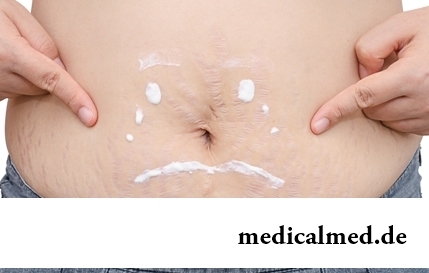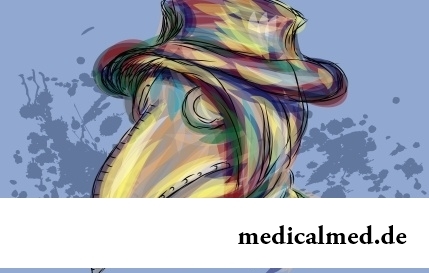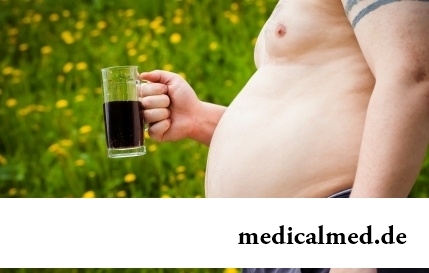





Adaptation
Adaptation (Latin adaptatio – adaptation) – process of adaptation of an organism, population or other biological system to the changing living conditions (functioning). Adaptations of the person are the cornerstone the morpho-physiological changes developed in the course of his evolutionary development which are directed to preservation of relative constancy of its internal environment – a homeostasis.
Allocate:
- Adaptation painful – adaptation of receptors and vocational central educations to action of the damaging irritants that leads to elimination or weakening of pain;
- Adaptation flavoring – adaptation of the flavoring analyzer that leads to weakening of flavoring feelings;
- Adaptation to height – adaptation of the person to living conditions and vigorous activity with the lowered partial pressure of oxygen in the inhaled air (as a rule, when climbing mountains and stay in unpackaged cabins of aircraft);
- Visual adaptation – adaptation of the visual analyzer to the level of brightness of color (light) irritants that causes changes of color (light) sensitivity;
- Adaptation of nerve centers – adaptation which is shown decrease in excitability of nerve centers at long influence of any irritants;
- Adaptation mental – adaptation of mental activity of the person to requirements and conditions of the environment;
- Adaptation of receptors – adaptation which is shown by decrease in sensitivity of receptors to constant action of irritants;
- Light adaptation – visual adaptation to increase in brightness of light. It is shown by decrease in light sensitivity of eyes;
- Sensory adaptation (synonym: adaptation sensitive) – adaptation of the analyzer which is shown by decrease in intensity of feeling at long influence of the corresponding irritant;
- Adaptation acoustical – adaptation of the acoustic analyzer to influence of an intensive sound. It is shown by decrease in acoustical sensitivity in time or after action of a sound;
- Adaptation tactile – adaptation of tangoreceptors to actions of irritants which is shown decrease in their sensitivity;
- Adaptation dark – visual adaptation to darkness. It is shown by increase in light sensitivity of eyes;
- Adaptation temperature – adaptation of thermoreceptors to influence of constant temperature. It is shown by decrease in their sensitivity;
- Adaptation to toxic substance – organism adaptation to intake of toxic substances from the environment. It is expressed by the fact that initial reaction to these substances forever and completely disappears, further it is not found by means of modern methods of a research;
- Adaptation labor (synonym: adaptation professional) – adaptation of the person to a certain form of work (conditions of the production environment and the nature of work) that, as a rule, leads to increase in professional working capacity;
- Adaptation physical – organism adaptation to the changing exercise stresses;
- Adaptation color – visual adaptation to color irritants. It is shown by decrease in color sensitivity of eyes and disturbance of distinguishing of color tones;
- Adaptation evolutionary – population adaptation to the systematic unidirectional unsharp changes of conditions of the environment. Occurs among generations selection of more adapted genotypes;
- Adaptation euzymatic – increase in activity of a certain enzyme in cells under the influence of the specific extracellular substances which are usually substrate of the induced enzyme.
During life the average person develops neither more nor less two big pools of saliva.

You are office worker, the driver, the fan of winter sports or do not think of life without bicycle? You conduct a slow-moving image жизн...
Section: Articles about health
Each person supports all life a SARS about 200 times. The peak of incidence falls on cold season, but it is possible to get sick with a temperature and a pharyngalgia, and sometimes and very possibly, even during a heat. The reasons for development of catarrhal diseases exists множество:...
Section: Articles about health
Reactive pancreatitis - the disease which is characterized by inflammatory process in a pancreas which arises most often because of excess activity of digestive enzymes. It − the emergency state which treatment has to take place in surgical department under control of doctors. The acute inflammation of gland can become the reason of its transition to a chronic form, and also development is purulent - necrotic pancreatitis which the extensive necrosis of fabrics can follow. Zabolev...
Section: Articles about health
The person, as well as all other beings living on our planet feels weather changing. It is normal meteosensitivity, not...
Section: Articles about health
Striya (extension) are the defects of skin having an appearance of direct or wavy strips from 1 to 10 cm long and 1-5 mm wide. In most cases at women of a striya are located on a stomach, hips, a breast or buttocks. At athletes they can appear on shoulders and внутренн...
Section: Articles about health
The main role in development of a peptic ulcer of a stomach and duodenum the bacterium Helikobakter plays pilor. Activity and the strengthened reproduction of this microorganism lead to weakening of protection of mucous membranes and their erosive damage. Displays of an illness seriously reduce quality of life: patients regularly test attacks of severe pain, heartburn, nausea. On this background also psychoemotional malfunctions develop: a kidney-vetch, as a rule, shows an acrimony, ча...
Section: Articles about health
Urogenital candidiasis (milkwoman) – a fungal infection which annoys unpleasant feelings in the field of generative organs, сопр...
Section: Articles about health
All parents are ready to what the baby often and pisat much. Since then, as the absorbing diapers strongly became current, keeping of the kid in dryness does not represent any problems. But if the grown-up kid continues to urinate in panties, parents of a nacha...
Section: Articles about health
A lot of things depend on a condition of a backbone in a human body, a backbone - not only a support for a body, it also a receptacle for a spinal cord, that is why malfunctions with a backbone are so dangerous. To treat rachis diseases very difficult and long, it is much simpler and more correct not to bring to a disease. Conforming to the rules provided in this article it is possible to avoid the majority of the problems connected with a backbone including those which are considered to be age, but a cat...
Section: Articles about health
Scientists have no unambiguous opinion on a proximate cause of emergence of a carcinoma cutaneum today. Are precisely established only фа...
Section: Articles about health
At this plant there are a lot of names: tuberiferous sunflower, Jerusalem artichoke, solar root, earth pear. Contrary to popular belief, it is not an exotic plant at all. The wild girasol grows in a midland of Russia practically everywhere: at the edges of roads...
Section: Articles about health
One of the major chemical processes happening in a human body are oxidation reactions. They go with participation of fats and carbohydrates which we receive from food, and the oxygen getting to us from air. A main goal of such reactions is obtaining the energy necessary for life activity. Unfortunately, as a result of these processes dangerous by-products – so-called free radicals are allocated. To minimize harm which they can cause to the person neo...
Section: Articles about health
Good appetite was always considered as a sign of good health. The correct operation of the mechanism which is responsible for the need for nutritious...
Section: Articles about health
Each failure in work of bodies and systems of a human body is, as a rule, shown by the whole complex of symptoms. In particular, malfunctions with health often cause emergence of cosmetic defects in the form of rashes on a face. Experienced doctors know that локализац...
Section: Articles about health
The thought that the mass of their body is too big at least once in life visits from 80 to 95% of women. Many women are so obsessed with this idea that constantly try all new and new ways of weight reduction. A considerable part of these techniques is ineffective, and some in general are unsafe for health....
Section: Articles about health
The technique of acupuncture (acupuncture) is used in the medical purposes more than three and a half millennia. It widely races...
Section: Articles about health
Life expectancy in various regions of Earth is not identical. Social stability, economic wellbeing, availability and level of medical care, household comfort, literacy of the population in the field of observance sanitary гигиен exert impact on it...
Section: Articles about health
Smoking not only exerts a negative impact on the state of health of the consumer of tobacco products, but is an air polluter the substances potentially dangerous to people around. In recent years significantly the number of the people aiming to get rid of an addiction increased. Business this difficult: having left off smoking, the person immediately begins to suffer from abstinence. Besides, many yesterday's smokers feel at first great disappointment as улучш...
Section: Articles about health
History of use of an anesthesia during operations contains more than 160 years. Annually in the world hundreds of thousands surgical вм are carried out...
Section: Articles about health
According to data of World Health Organization, the cataract is diagnosed almost for 7% of the population of Earth. The statistics of incidence is considered not full as at an initial stage the illness, as a rule, does not cause to the person of special inconveniences, and many having got sick...
Section: Articles about health
History of mankind contains several tens of epidemics whose emergence was compared by eyewitnesses and historians to doomsday. The most terrible of them claimed the lives of millions of people, having made even the whole people to the person of the earth. What they − the diseases striking terror? Whether it managed to the person to find treatment, or he is still powerless before forces of nature?...
Section: Articles about health
The mankind knows that some toxins at intake in the minimum quantities have therapeutic effect...
Section: Articles about health
Many parents of children at the age of 2-4 years face excessively whimsical behavior of the child. The kid exhausts constant crying and whims not only the parents, but also himself. In what the reasons of children's whims. And how to fight with them?...
Section: Slideshow
Deciding to get rid of an addiction, not all imagine what effects it is necessary to face. Process of refusal of smoking causes quite essential discomfort in most of people: differences of mood, a sleep disorder, fatigue, decrease in physical and intellectual activity and a number of other symptoms reducing quality of life. Abstinence can be strong: an essential part of attempts comes to an end leaving off smoking failure, and people are returned to the use of cigars...
Section: Articles about health
Impossibility to conceive the child – a trouble of many Russian families. During quite long time was considered that the main "culprits...
Section: Articles about health
Life of the modern woman is very difficult. Opportunities to realize itself are wide: it not only education and career, but also the most various hobbies from sport before needlework. It is not less important to build private life, paying an attention maximum to children, the husband, parents, e...
Section: Articles about health
It is pleasant to state a possibility of improvement of quality of life of people with problems of functioning of secretory system. Efforts of talented inventors created products which will be able to provide normal life activity of clients with moderate degree of a disease, it is essential to facilitate the help to patients with strongly expressed disturbances....
Section: Articles about health
